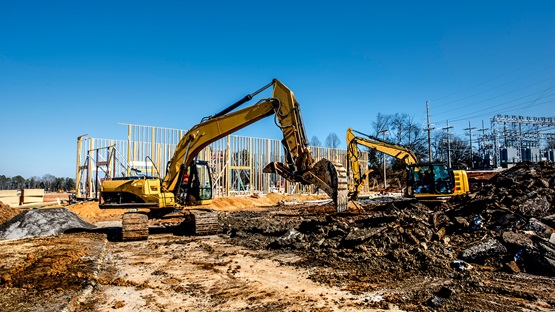A year ago, as North Dakota lawmakers discussed banning firms from China and other “foreign adversaries” from buying real estate, one of the state’s employers objected.
Cirrus Aircraft, a manufacturer employing 430 in Grand Forks, said such a ban would limit its ability to grow. That’s because a Chinese firm bought Cirrus in 2011 when the manufacturer was struggling financially.
Mark Schramek, a then Cirrus executive, told the lawmakers that the federal government had vetted the deal and allowed it to happen if the company agreed to certain conditions, including reporting any foreign person visiting its facilities.
Cirrus was planning an expansion that would increase employment by 150, but the ban considered by lawmakers wouldn’t allow that, he said. “We would be forced to either halt our expansion, potentially eliminating those 150 jobs, or even closing our operations here in North Dakota.”
North Dakota lawmakers ultimately approved the ban but carved out an exception for Cirrus. It’s an example of tensions that may emerge as more than a dozen states, worried about China’s influence in the U.S., adopt laws similar to North Dakota’s. In the Ninth District, Montana and South Dakota have also passed such laws recently.
The economic impact of these laws has yet to be seen. While China has the world’s second biggest economy, its investors have a limited footprint in the U.S., and even less so in the Ninth District; most gravitate to more populous regions.
But the laws may have a broader effect than just on the handful of countries commonly identified as adversaries, according to Paul Vaaler, a professor of law and business at the University of Minnesota. Foreign investment is already a challenge because the economic and political system is less familiar to investors. Adding a patchwork of state restrictions doesn’t help.
“It makes it more costly,” he said, “and so maybe other locations gain in priority because they do not have those regulations.”
Growing foreign investments
The foreign investment that prompted North Dakota lawmakers to take action was a wet corn mill to be built north of Grand Forks by China’s Fufeng Group. The project made economic sense for the firm because corn is abundant in the region and the city offered tax breaks. Those suspicious of China’s intentions said the site also made sense for intelligence gathering: It’s only 12 miles from Grand Forks Air Force Base, home of the military’s new satellite ground stations.
In preparation, Fufeng purchased 370 acres of vacant land in 2022. This would’ve been one of a handful of foreign direct investments in North Dakota. The U.S. Bureau of Economic Analysis (BEA) usually reports these investments but suppressed the state data for that year to avoid revealing confidential data about specific companies; Grand Forks County records show Fufeng spent more than $2.8 million on land.
Comprehensive data on real estate investments by foreigners are not readily available, while data that are available aren’t always directly comparable. But, in general, the data show that foreign investments in U.S. real estate continue to grow while Chinese investment has slowed or decreased.
According to analysts at the Rhodium Group, this change is a result of increasing restrictions on foreign direct investment in both the U.S. and China. In the U.S., rising geopolitical tensions have stoked scrutiny of inbound foreign investment from China. In China, government restrictions on outbound foreign investment are part of an effort to stabilize the nation’s currency.
Among other countries commonly identified as adversaries, such as Russia and North Korea, none has significant investments in the U.S.
According to the BEA, the value of physical assets owned by U.S. affiliates of foreign firms totaled $3.4 trillion in 2021 (Figure 1). This total includes property not considered real estate, such as factory equipment, but further breakdowns aren’t available. This is an 18 percent increase since 2017. As a share of all physical assets owned by firms in the U.S., assets owned by affiliates grew from 17 percent to 18 percent in the same period.
Affiliates are U.S. firms in which 10 percent or more of the voting shares are controlled by a foreign individual or firm. Most affiliates are majority owned by foreigners. Some state laws restricting foreign direct investment apply only to firms that are majority owned. Some, like federal laws, also affect firms that are controlled by foreigners despite not being majority owners.
Most of the physical assets of affiliates are currently controlled by investors from Canada, Japan, the United Kingdom, Germany, and France, all U.S. allies. Together, these five controlled more than 60 percent of all affiliate assets in 2021.
Chinese firms have increased the assets they control at a rapid pace. But they are still relatively small players in the U.S. In 2020, assets owned by Chinese-linked affiliates were worth just 2 percent of all affiliate assets; 2021 data was suppressed by the BEA, but other BEA data on new investments show a decrease in Chinese investments.
Among states, Texas, California, and New York have the most foreign-controlled assets. Ninth District states receive much less attention (Figure 2). For example, the value of all affiliate assets in Minnesota amounted to a little more than 1 percent of the total nationwide in 2021. Smaller states, such as South Dakota, receive even less foreign investment. Affiliate assets in that state were 0.2 percent of the total.
Farmland and housing
Traditionally, lawmakers at the state and federal levels have paid particularly close attention to agricultural land, given long-standing concerns over food security. Many states, including most Ninth District states, have long banned nonresident foreigners from owning ag land, and the U.S. Department of Agriculture requires foreigners who control ag land to report their holdings.
According to USDA statistics, foreigners owned or held long-term leases to 44 million acres of American farmland, pastureland, and forestry land in 2021. That’s about 3 percent of all U.S. ag land. In Ninth District states, they controlled about 2 percent. Differences in methodology mean most of this investment is unlikely to be included in BEA data.
In terms of acreage, foreign control of ag land has grown both in the Ninth District and across the nation (Figure 3). In the Ninth District, the biggest increase has been among European companies developing wind and solar energy projects on leased ag land.
In contrast, the amount of Ninth District land controlled by people or firms from adversary countries has remained small and unchanged for decades. For example, 429 acres in Montana are all the ag land in the district that’s Chinese controlled. The purchasers were all from Hong Kong, a British territory at the time of the purchase.
One area of real estate investment where Chinese investors play a major role is residential. According to the National Association of Realtors (NAR), foreigners purchased 84,000 U.S. homes in 2023 (Figure 4). That’s around 2 percent of all homes purchased that year. Of the foreign buyers, Chinese investors purchased the most. They bought 13 percent of homes sold to foreigners and paid for 26 percent of the total value of those sales. Mexicans were second based on the number of homes purchased, and Canadians were second based on value.
But foreign residential investments in both number of homes and value of sales have declined since 2017 due to low inventory, the NAR reported. They have fallen even further as interest rates rose in recent years.
It’s unlikely many homebuyers from these countries bought homes in the Ninth District. A vast majority of Chinese, for example, bought homes in California, Florida, and Texas, according to NAR surveys. Ninth District states do attract some foreign homebuyers, but not many. For example, 4 percent of Mexican homebuyers bought homes in Minnesota in 2022. A similar share of Canadian homebuyers bought homes in Montana.
Laws that welcome and laws that say keep out
In 2021, when the Fufeng deal was announced by state and local leaders in North Dakota, it was hailed as “the largest single private capital investment in the region’s history.” Grand Forks had beaten three other Midwest regions to win the deal. Fufeng’s mill would have provided an economic boost to the region as an investor, employer, taxpayer, buyer of local corn, and exporter of higher-value ag products.
Fast forward to 2023 and the city had scuttled the deal with Fufeng after the Air Force described the firm’s proposed mill as a “significant threat to national security.” State lawmakers used Fufeng as an example of why restrictions on foreign investments are needed.
Throughout American history, there has been a similar tension between concern about foreign influence, at times with racial overtones, and the need for foreign investment to help the country grow. It shows up in state laws that guarantee foreigners the same property rights as citizens and laws that prohibit foreigners from owning real estate, especially farmland. About half of states have guarantees, a third have prohibitions, and a fifth, like North Dakota, have both.
In general, federal law has been open to real estate investments by foreigners, even adversaries. Currently, the Committee on Foreign Investment in the United States (CFIUS) reviews such investments only if they fall within certain categories, including being too close to certain military facilities and being part of key port facilities. The Grand Forks base wasn’t initially on the list, which contributed to state lawmakers’ decision to impose their own restrictions. Now it is, and CFIUS will scrutinize foreign investments within 100 miles of the base.
But the CFIUS process is not a blanket ban on investments. Countries the U.S. doesn’t get along with can still invest if the investment is not found to be a national security threat, and homebuyers are exempt from CFIUS review.
Vaaler said that openness reflects the value of foreign direct investment to the United States. “Investment is good for the country from the standpoint of economic growth. And it’s also good for connecting the country with the rest of the world,” he said. The interdependence fostered by trade and foreign investment makes countries less likely to go to war, he said.
But the appreciation for foreign investment has been strained in recent years.
At the federal level, CFIUS gained new regulatory powers in 2018 in response to concern over Chinese spying, including the ability to scrutinize investments in undeveloped land.
In the past year, a quarter of states, prompted by the Fufeng deal and other incidents, have passed new laws to further restrict foreign investment in real estate. All of them target firms or people from countries considered unfriendly to the U.S., though which countries are targeted depends on the state. North Dakota and Montana use a federal government list of “foreign adversaries” barred from providing technology to U.S. telecommunications systems. South Dakota has its own list, which shares some of the same countries.
The recent laws vary also by the type of real estate that’s off limits to foreigners. In the Ninth District, South Dakota limits just the ownership of ag land, Montana limits the purchase and lease of ag land and real estate near military bases or critical infrastructure, and North Dakota limits ownership of all real estate.
A chilling effect on investments?
When he introduced North Dakota’s ban on investments from foreign adversaries in early 2023, state Sen. Bob Paulson had already heard criticism that such a law could have a broader economic impact.
“This bill would not stop foreign investment in North Dakota,” he told other lawmakers. “There are multiple types of business arrangements made all the time in our country. There is nothing in this bill that prevents even a foreign adversary from operating in North Dakota.”
The law only bars real estate ownership, and a foreign adversary firm could just lease, he said.
For some businesses, such as wind and solar energy developers, leasing works just fine. But for others, such as Cirrus Aircraft, having control of their own factory is a prerequisite for further growth.
Tu-Uyen Tran is the senior writer in the Minneapolis Fed’s Public Affairs department. He specializes in deeply reported, data-driven articles. Before joining the Bank in 2018, Tu-Uyen was an editor and reporter in Fargo, Grand Forks, and Seattle.





